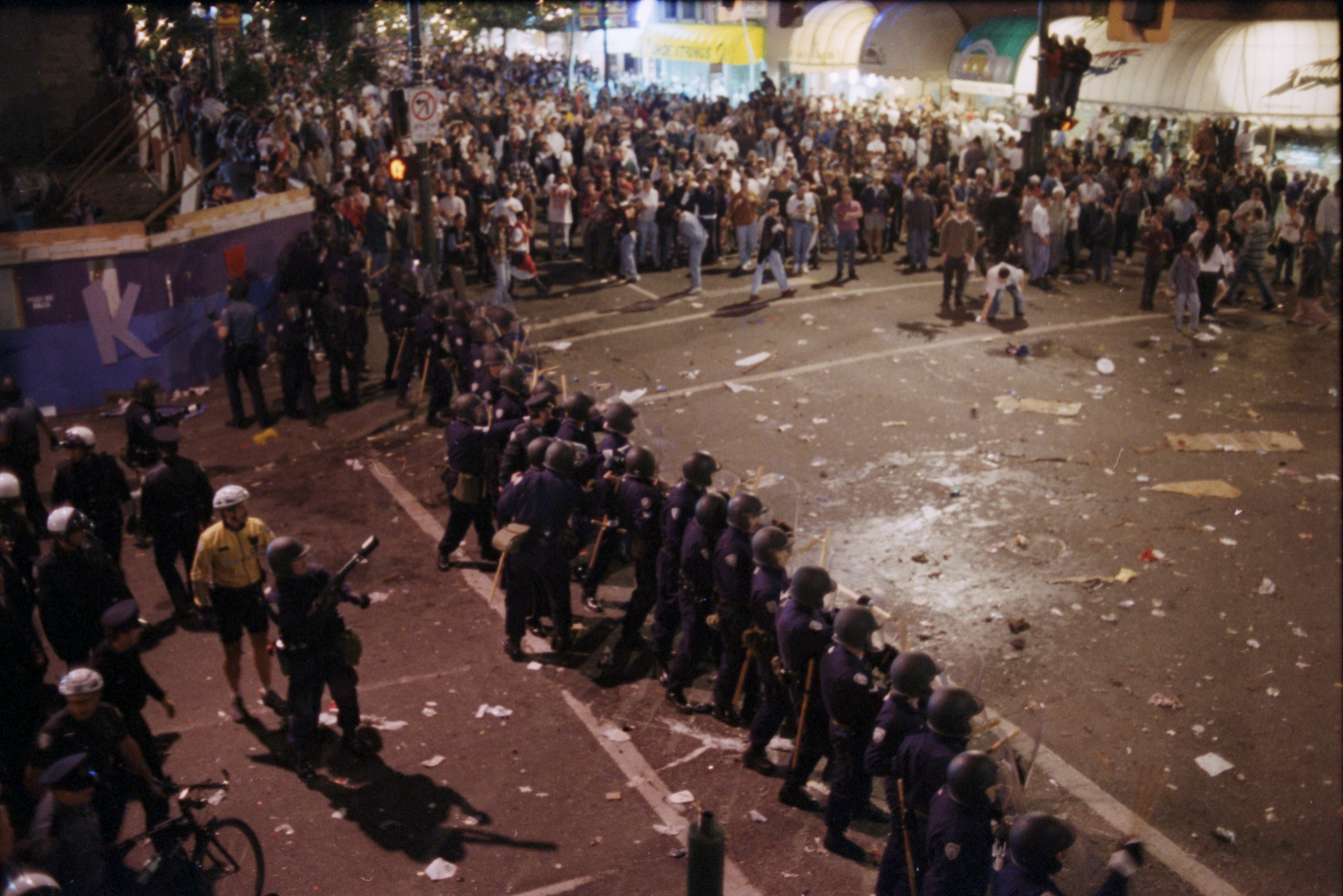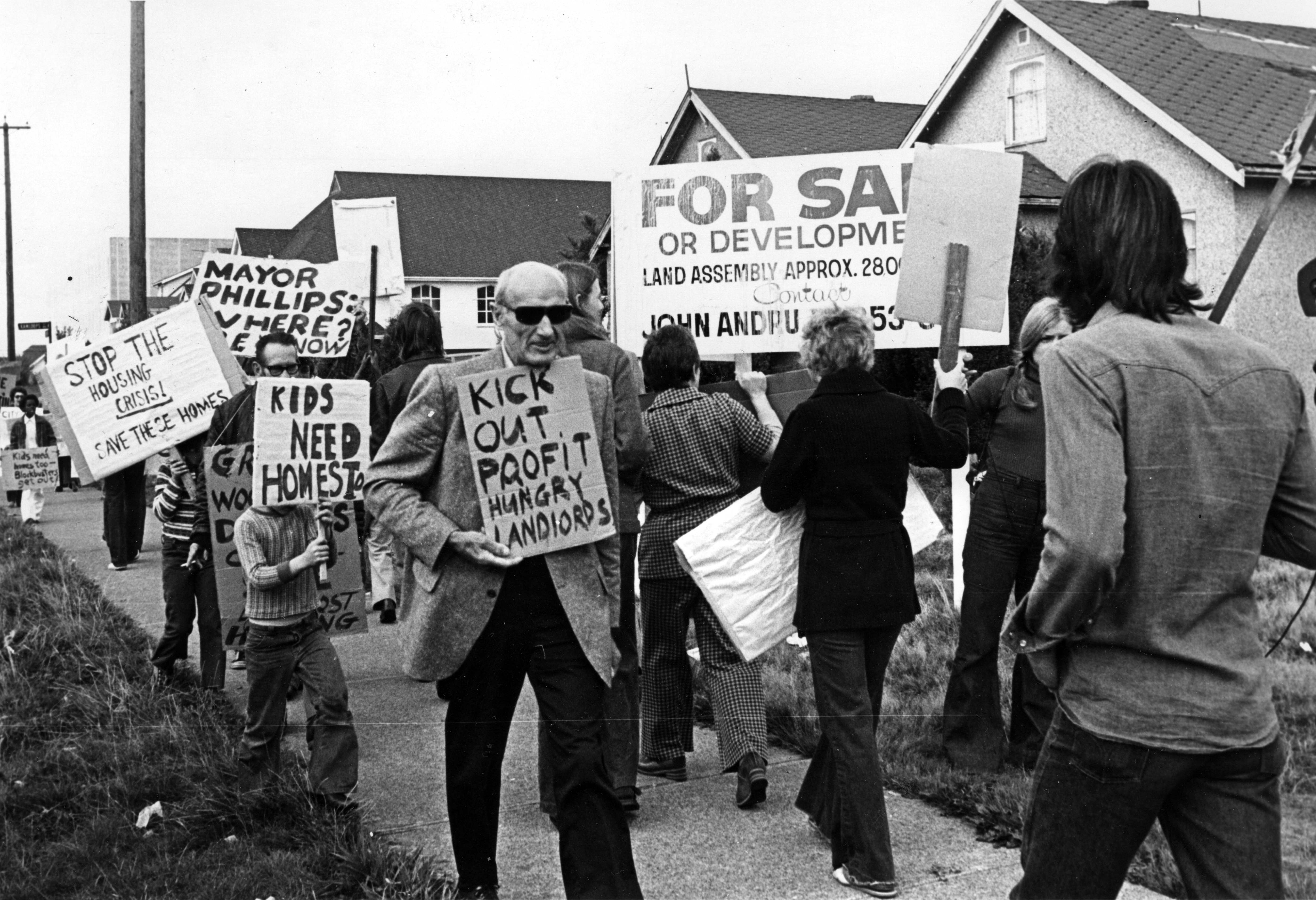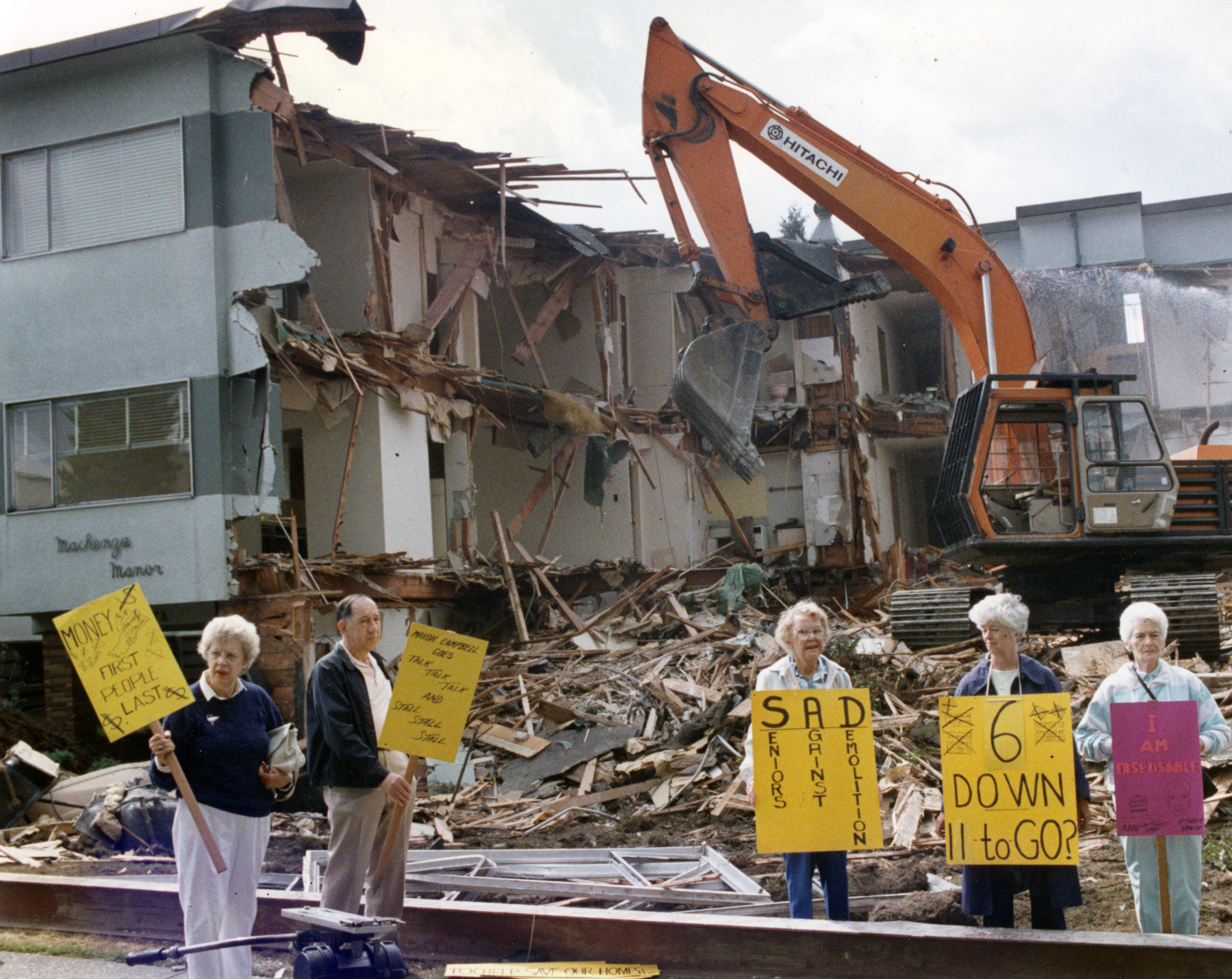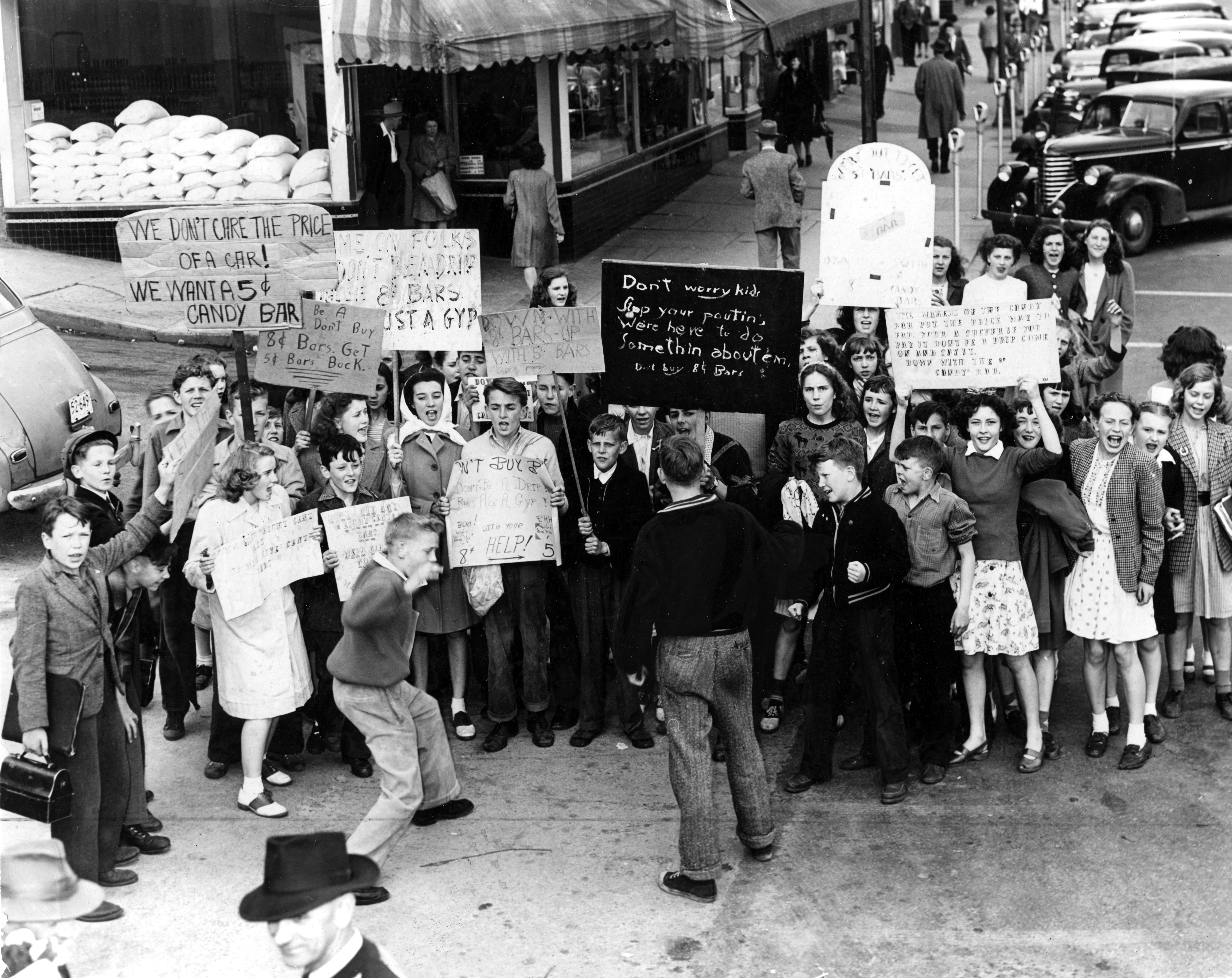On June 14, 1994, I started my shift in Surrey. My assignment for the Vancouver Sun was to wait until the end of the Stanley Cup final between the New York Rangers and the Canucks, catch the SkyTrain downtown, and report on what happened.

Stanley Cup riot June 14, 1994. Stuart Davis/Vancouver Sun
I crammed into a car with dozens of others who were openly drinking and yelling. The mood was intense. When we got out at Granville, the crowd flowed down the street, breaking the windows of the Bay and looting anything they could carry, including headless mannequins. Everyone drifted towards the epicenter at Robson and Burrard. Later, the riot police circled the crowd firing canisters of tear gas, but neglected to leave an escape route. I watched Anne Drennan, the VPD’s media officer tell national television that everything was under control, even as her mascara streamed down her face. It was a colossal fucking mess.

Kate Bird’s latest book City on Edge: A rebellious century of Vancouver protests, riots, and strikes brought all that back to me with one powerful newspaper photo. And, I would be surprised if anyone who has lived in this city for any length of time doesn’t feel a similar connection to something in this book.
For Kate, who moved to Vancouver from Montreal in the ‘70s, and worked as the Vancouver Sun and Province’s librarian for 25 years, it was the peace marches, solidarity and the environment.

Selecting photos for the book was a combination of events that Kate had researched in the past and great photos that needed more research.
“When I looked at all these images that I collected, I found some themes running through them,” she says. “Labour of course and anti-government, but also indigenous protests, social justice issues, the environment and hooliganism and riots.”

You might be surprised to learn that housing is a perpetual Vancouver problem. Themes such as affordable housing, evictions for luxury condos, homelessness, and land assembly run through almost every decade of the book.
But some things are better.
“Some people think we are still protesting over the same thing, but of course lots of things have changed. Things have improved for women, for LGBTQ and for labour.”

Vancouver, though does seem to have more of its share of protests, says Kate.
“Early in the 1900s, the Industrial Workers of the World (IWW) came up and got a real foothold here in the resource industries. In the ‘60s there were draft dodgers from the US and a lot of them stayed and got jobs at SFU and UBC as professors and got involved in politics. There was way more influence from the west coast than from eastern Canada.”

Related:
Aborted Plans: Seasons in the Park
© All rights reserved. Unless otherwise indicated, all blog content copyright Eve Lazarus.



3 comments on “City on Edge”
For three-decades-and-counting, I have been documenting what I call “Faces of Resistance.” I have a gallery on my website.
In June, 1994, I was in the middle of a two-month bicycle expedition through, Alaska, Yukon, and the length of British Columbia. On the 14th, I pulled in to an isolated restaurant/campsite. I’d just made the climb from Dease Lake, descent to the Stikine River, and climb back up onto the plateau.
The night before, I was hosted by a group of schoolteachers in Dease Lake, after a detour into Telegraph Creek. The schoolteacher there insisted I couldn’t miss the Stanley Cup game and phoned back to Dease Lake to arrange for me to see the contest. Though not a hockey fan, sitting through the game seemed a fair price to pay for another night out of my one-person tent and a shower. I arrived with a six-pack. Of course, the game was a big disappointment to the teachers. I feigned similar regret.
Sitting down at the restaurant on the plateau for a spaghetti dinner, the muted satellite TV in the corner caught my attention. It was, to my surprise, tuned to the evening news, on what is now Global. Aside from the previous evening’s game, I hadn’t seen a TV in over a month. At first, I assumed there was some new uprising afoot in the US, or Latin America. But, wait, I recognized my old Vancouver neighbourhood. What on earth was going on? I called for the proprietor to turn on the sound.
And that’s how I witnessed the Stanley Cup Riot. From my perspective — happily lost among one of the great landscapes of British Columbia — it reinforced my existing jaundiced view of “civilization” at the end of the twentieth century.
[…] first heard of the All Seasons Park when I was flipping through Kate Bird’s new release: City on Edge. The photo, taken by Province photographer Gordon Sedawie over 46 years ago, shows a peace sign […]
[…] City on Edge […]